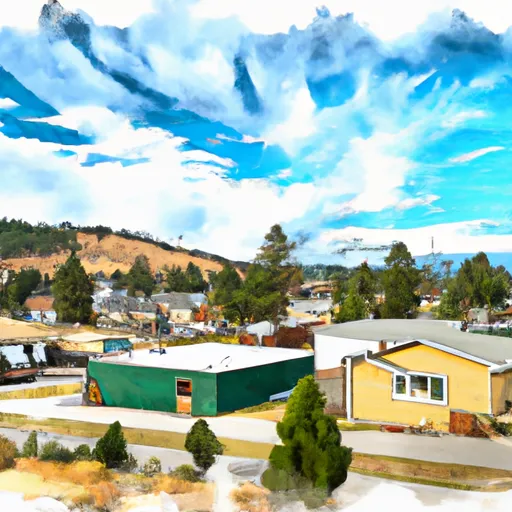-
 Snoflo Premium
Snoflo Premium
Get unlimited access to all our content
With no Ad interruptions! - Start Your Free Trial Login with existing account
Sanders
Eden Index
Climate
7.7
•
Recreation
•
Community
•
Safeguard
3.1/10

Sanders, Montana is a picturesque town situated in the heart of the Rocky Mountains. Known for its breathtaking natural beauty, Sanders boasts a diverse climate that offers something for everyone. Summers are warm and sunny, perfect for outdoor activities, while winters are snowy, making it an ideal destination for winter sports enthusiasts.
The hydrology constituents in Sanders are abundant, with numerous rivers and lakes dotting the landscape. The famous Sanders River, known for its crystal-clear waters, provides excellent opportunities for fishing, kayaking, and canoeing. Additionally, the surrounding mountains are home to pristine alpine lakes, offering peaceful hiking and camping experiences.
Outdoor recreation opportunities in Sanders are vast and cater to a variety of interests. Hikers can explore the vast network of trails that wind through the mountains, offering stunning views of the surrounding landscapes. For adrenaline junkies, the area boasts world-class skiing, snowboarding, and snowmobiling trails during the winter months. Furthermore, wildlife enthusiasts can spot a wide array of animals, including elk, deer, and even bears.
In conclusion, Sanders, Montana is a nature lover's paradise with its diverse climate, abundant hydrology constituents, and a plethora of outdoor recreation opportunities. Whether you seek thrilling adventures or a tranquil escape in nature, Sanders is sure to captivate your heart.
What is the Eden Index?
The Snoflo Eden Index serves as a comprehensive rating system for regions, evaluating their desirability through a holistic assessment of climate health, outdoor recreation opportunities, and natural disaster risk, acknowledging the profound impact of these factors on livability and well-being.
Climate Health Indicator (CHI): 7.7
Sanders receives approximately
335mm of rain per year,
with humidity levels near 63%
and air temperatures averaging around
9°C.
Sanders has a plant hardyness factor of
4, meaning
plants and agriculture in this region thrive during a short period during spring and early summer. Most
plants will die off during the colder winter months.
By considering the ideal temperature range, reliable water supplies, clean air, and stable seasonal rain or snowpacks, the Climate Health Indicator (CHI) underscores the significance of a healthy climate as the foundation for quality living.
A healthy climate is paramount for ensuring a high quality of life and livability in a region, fostering both physical well-being and environmental harmony. This can be characterized by ideal temperatures, reliable access to water supplies, clean air, and consistent seasonal rain or snowpacks.
Weather Forecast
Streamflow Conditions
Lower Yellowstone
Area Rivers
Lower Yellowstone
Snowpack Depths
Lower Yellowstone
Reservoir Storage Capacity
Lower Yellowstone
Groundwater Levels
Recreational Opportunity Index (ROI):
The Recreational Opportunity Index (ROI) recognizes the value of outdoor recreational options, such as parks, hiking trails, camping sites, and fishing spots, while acknowledging that climate plays a pivotal role in ensuring the comfort and consistency of these experiences.
Access to outdoor recreational opportunities, encompassing activities such as parks, hiking, camping, and fishing, is crucial for overall well-being, and the climate plays a pivotal role in enabling and enhancing these experiences, ensuring that individuals can engage in nature-based activities comfortably and consistently.
Nearby Ski Areas
Catastrophe Safeguard Index (CSI):
The Catastrophe Safeguard Index (CSI) recognizes that natural disaster risk, encompassing floods, fires, hurricanes, and tornadoes, can drastically affect safety and the overall appeal of an area.
The level of natural disaster risk in a region significantly affects safety and the overall livability, with climate change amplifying these risks by potentially increasing the frequency and intensity of events like floods, fires, hurricanes, and tornadoes, thereby posing substantial challenges to community resilience and well-being.
Community Resilience Indicator (CRI):
The Community Resilience Indicator (CRI) recognizes that education, healthcare, and socioeconomics are crucial to the well-being of a region. The CRI acknowledges the profound impact of these elements on residents' overall quality of life. By evaluating educational resources, healthcare accessibility, and economic inclusivity, the index captures the essential aspects that contribute to a thriving community, fostering resident satisfaction, equity, and social cohesion.

